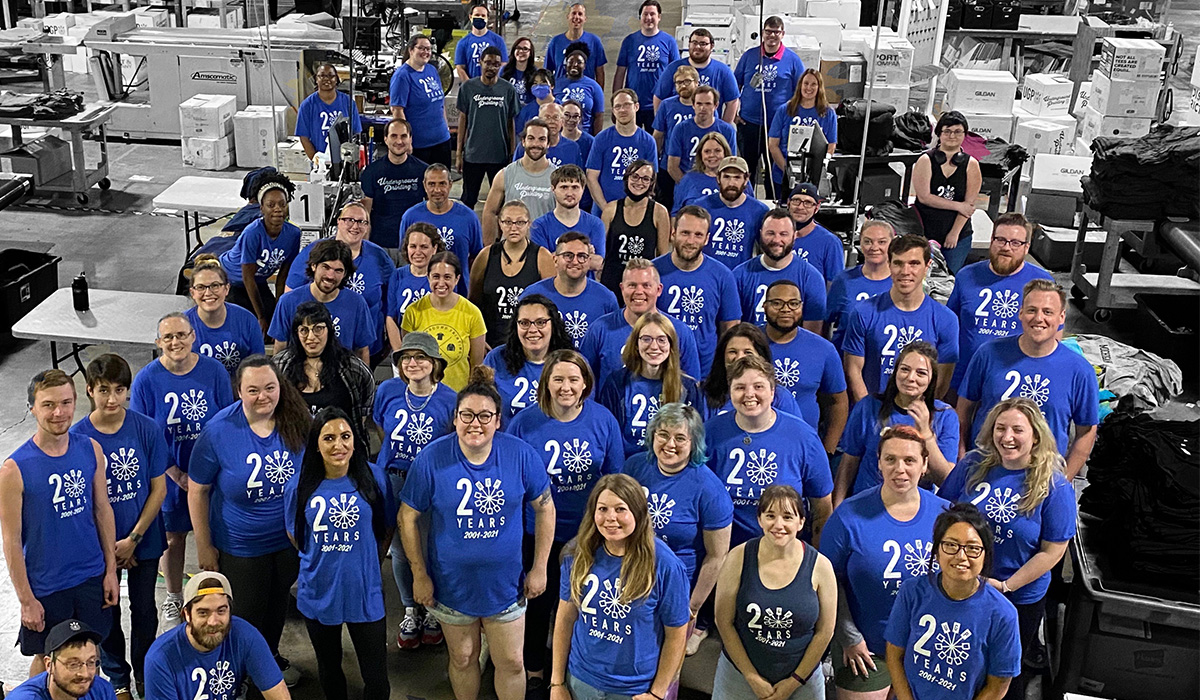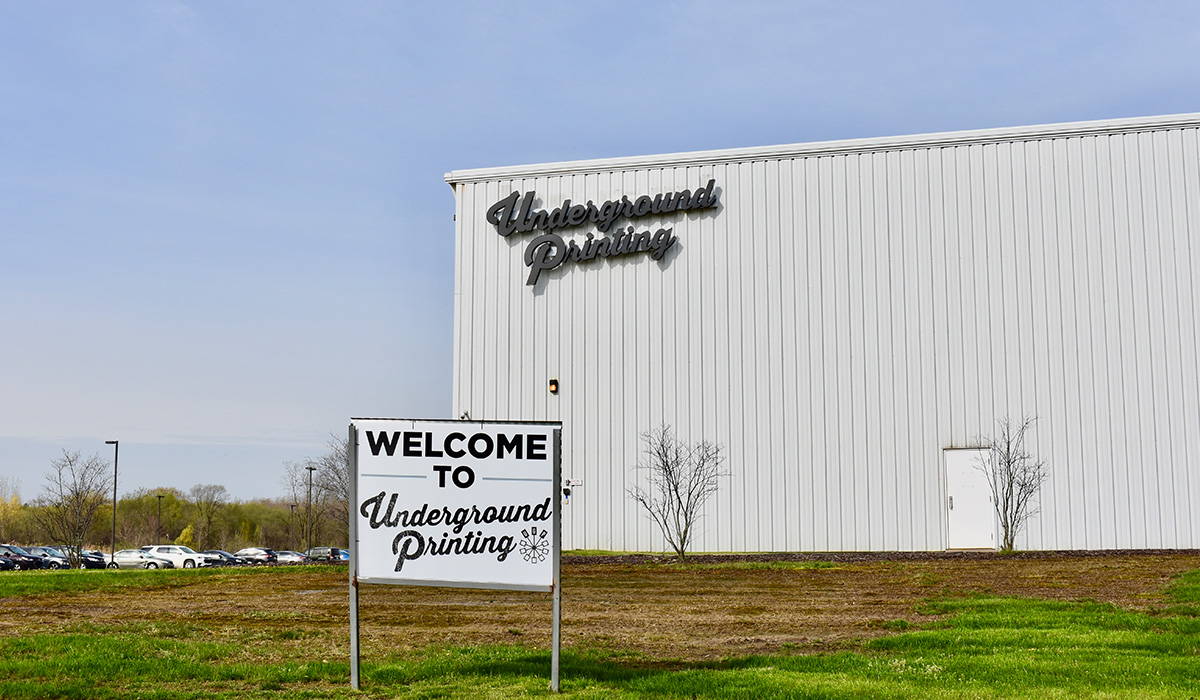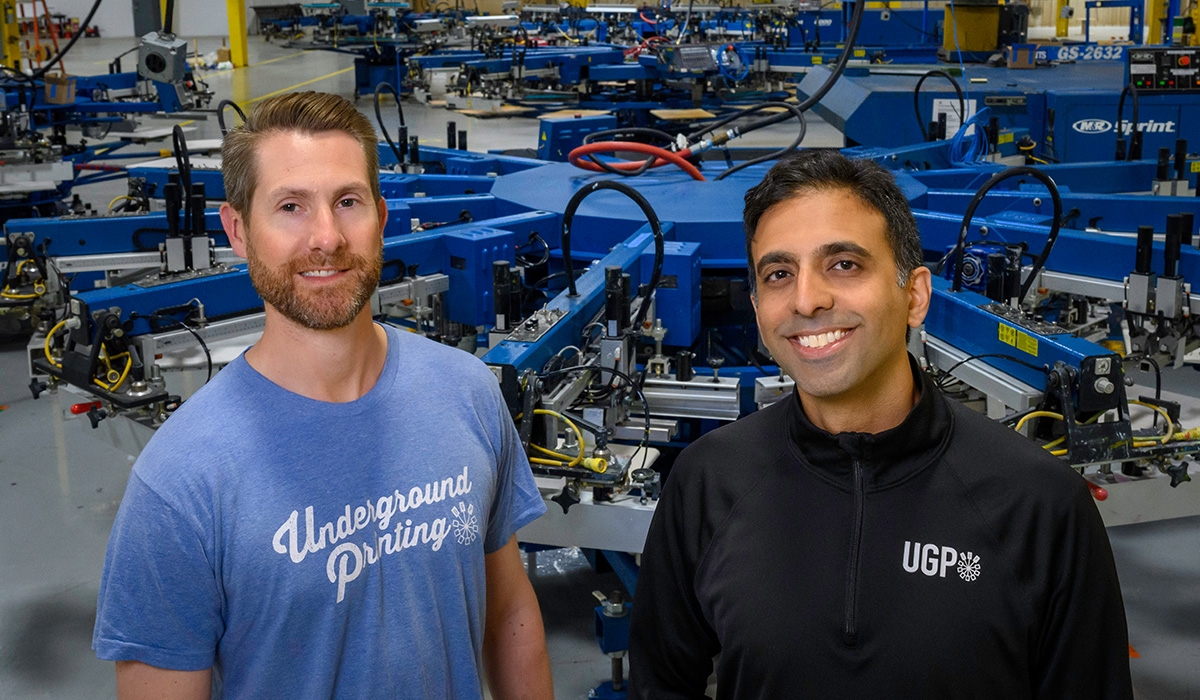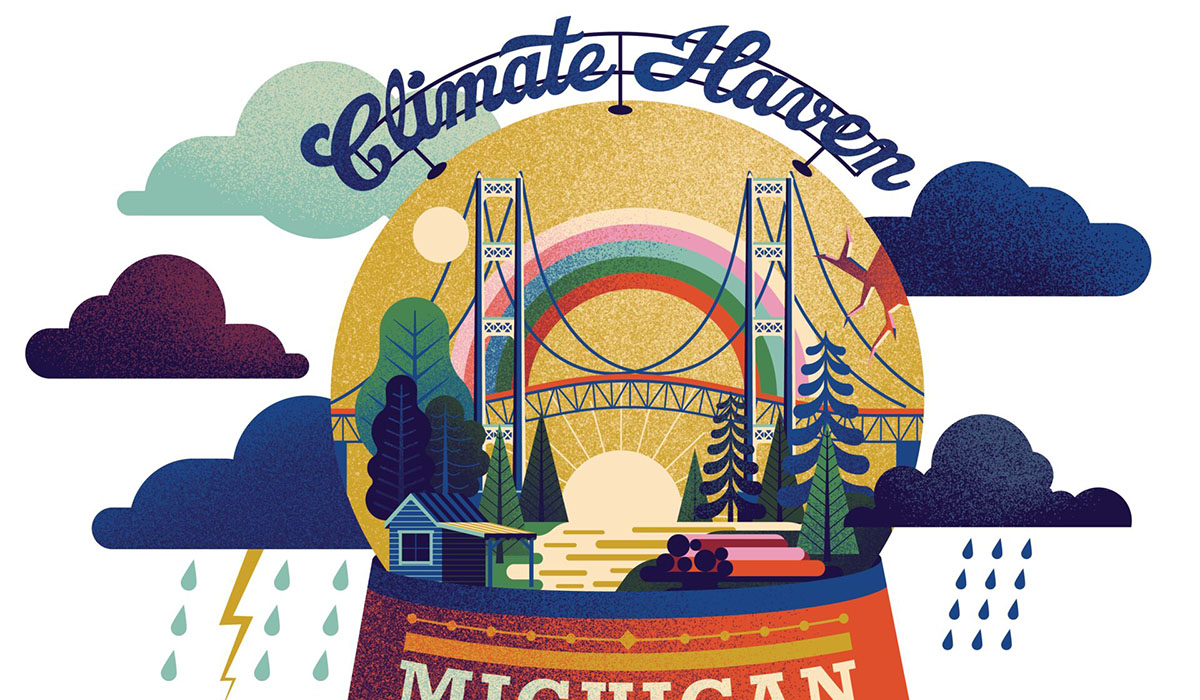Underground No More
•
Photo by Doug Coombe
It all began with one cool car.
When Rishi Narayan, ’03, MSE’05, arrived in Ann Arbor in 1999 as a chemical engineering major, his residence hall on North Campus felt a little far from the social scene. So he decided to get a vehicle.
“I had a choice between a very practical, very trustworthy Honda Accord or a Ford Probe GT Turbo with flip-up lights,” Narayan says. “So, of course, I took the flip-up lights.”
The Probe may have had style, but it was far from reliable. On one drive back to Ann Arbor from Okemos, Mich., where Narayan grew up, it broke down and he had to call for a tow truck. After hitching up the Probe, the tow truck driver, Rick, offered him a ride back to campus.
“On the way, we got to talking, and it turned out he used to have a business on campus, printing T-shirts and signs. I got to thinking about that. I talked to Ryan about it,” Narayan says of his friend—and fellow engineering student—Ryan Gregg. “And we were like, ‘Oh, that could be cool,’ but we didn’t do anything with it then.
But the idea resurfaced one Saturday during their sophomore year, when the Probe needed to be towed yet again. “We were both in the car, driving down Main Street, and it was the day before the Michigan-versus-Purdue home game,” Narayan says. Suddenly, a Purdue fan—unfamiliar with Ann Arbor traffic patterns—pulled out in front of the Probe. Narayan couldn’t avoid the collision, which damaged one of his headlights. He again called Rick, “who proceeded to graft a Thunderbird light onto my car.”
“With chicken wire!” interjects Gregg. “I’m like, ‘Where did
you find this guy?’” The three got to talking about campus businesses, and Rick mentioned that he still had his screen printing equipment. He wasn’t using it—it was just sitting in his garage.

At the time, Gregg and Narayan were involved in multiple campus organizations, including fraternities and student government. They realized that one thing every group needed was custom T-shirts, and they were confident they could get plenty of customers for screen printed swag. They took Rick out to dinner and made him an offer.
“His company’s name at the time he had it was A-1 Shirt & Sign. So we paid homage to him and called it A-1 Screen Printing, and that was the original name of our business,” Narayan says. “Of course, it was genius marketing at that time because it was first in the phone book.”
“Which actually worked!” Gregg says.
“Except, literally two years later, phone books were obsolete,” Narayan notes. The pair had planned to lease a space for their print shop, but when they realized they couldn’t afford it, Rick offered the use of his garage. “He had a broken-down Chevy in one half,” Narayan says.
“And his golden retriever slept in the garage and got dog hair everywhere,” Gregg adds.
“But it was free,” Narayan says.
And that’s how we got started.”

Fast forward to 2022, and the pair is still in business together, longevity that they acknowledge is unusual. But then again, it’s not like building Underground Printing (as they renamed the company in 2003) has ever been boring. The business has come a long way from its origins as a two- man dorm room hustle when they were both sophomores in the College of Engineering to a full-fledged company with 200 employees, 25 retail locations in 13 states, and—as of April—an expansive new headquarters in Ypsilanti Township, Mich.
Today, Narayan, the company’s chief revenue officer, has become someone that young, would-be entrepreneurs flock to for advice. And over and over, they ask him the same question: “How do you pick a co-founder?”
“It’s about trust,” Narayan tells them. That’s been their key to success for more than two decades: trust between Narayan and Gregg, the company’s CEO, who have been best friends since sixth grade.
“Ryan and I don’t have to see eye-to-eye on everything,” Narayan says. “But he knows me, and I know him. And that trust is even stronger today than it was years ago.”
Before starting their printing business, the pair had worked together on a previous venture, selling loft beds to fellow students. At the time, U-M’s residence hall furniture was not stackable, and students who wanted to free
up floor space had to build their own lofts. Gregg and his father constructed one for his room in Mary Markley Hall, and friends began asking if the Greggs could build more. Seeing an opportunity, Gregg asked Narayan to help recruit more customers.
“One year, we fabricated 300 beds,” Gregg says. “But the downside was that it was essentially a one-week-a-year business. Once move-in is over, it’s done.”
The profits were never life- changing, but the loft venture did teach the friends something important, says Narayan: “Business is fun!” Their other “aha moment” was that the University was a large market, one with plenty of opportunities for startups.
Narayan, the company’s chief revenue officer, has become someone that young, would-be entrepreneurs flock to for advice. And over and over, they ask him the same question: “How do you pick a co-founder?” “It’s about trust.”

“That was back before entrepreneurship was this really exciting career,” notes Narayan. “This is pre-‘Shark Tank,’ pre-entrepreneurship clubs. Entrepreneurship was not something you told your parents about. But it was taking over our brain space.”
The lessons from their loft bed business translated well as A-1 Screen Printing, which was an immediate success on campus. Two years later, the co-founders bought out another local screen-printing business, Chelsea, Mich.-based Underground Printing, and took that name.
“When they started, they were truly underground—in a basement,” Narayan says. “But for us it just really fit our ethos.”
“We became known as the T-shirt guys,” Gregg says. “We would overpromise, over-deliver. It wasn’t really rocket science, but we just did it 18 hours a day every single day.” No matter the request, they would just say yes and make it happen.
In 2005, the company upgraded its 3,000-square-foot production facility to a space four times the size. Two years later, they moved again, this time into
a 33,000-square-foot shop. Meanwhile, Underground Printing was opening retail locations, going from a single postage- stamp storefront on South University to stores as far away as Oklahoma and North Carolina. A bustling website serves customers nationwide.
In addition to T-shirts, Underground Printing now offers hats, outerwear, mugs, and myriad other promotional swag (including, as of 2020, custom facemasks). The technology hasn’t changed much. While customers can now design and order products online, a physical presence in college neighborhoods remains as vital as it was back in 2001, and the bulk of the company’s sales is still screen printing, a technique that dates to the Middle Ages.

“Screen printing is a very analog process,” Gregg says. “It is an art and a skill, and not all screen printers are equal. It takes a long time to learn and be good. The advantage is screen printing done well is very efficient and very high quality. Digital printing has some advantages, but it can’t replicate the scale and efficiency. It’s like a 3D printer versus a Ford factory. Digital printing allows you to print one part, but if you want 10 million parts at scale, you’re building out a plant.”
It seems appropriate, then, that Underground Printing would be moving its headquarters into a former auto parts plant— specifically, a 172,000-square-foot facility recently vacated by an exhaust-system manufacturer. It offers plenty of space for presses, embroidery machines, and other equipment along with storage, offices, and room to grow. It’s a cavernous place that offers a striking contrast to the tow truck driver’s garage where the co-founders learned their trade back in 2001.
Taking visitors on a tour in March, Narayan reflected on how far he and his friend had come.
“I was supposed to be an engineer—I thought I was going to be an academic like my dad,” he says of his father, a professor at Michigan State. “And I didn’t think T-shirts would be enough for a long time. But now it’s the thing that has defined me, and it allows me to open doors and have opportunities and meet people and learn about all sorts of industries.”
Ironically, T-shirts also made him into an academic after all, teaching a course on entrepreneurial e-commerce at the Center for Entrepreneurship at U-M’s College of Engineering. But even as he’s happy to share his wisdom with the next generation, Narayan cautions his students that his success story represents a truly unusual case.
“In class, I say, ‘Just get into something, and embrace the fact that it’s not going to be the thing you end your career on. That’s OK. You do not need to raise money on your first idea and have it to be your life’s work.’ Ryan and
I are very lucky that our first real business is the one we’re doing 20 years later—and that it’s still something that we enjoy.”
AMY CRAWFORD is a writer living in Ann Arbor. Her stories have also appeared in Smithsonian, HuffPost, and Nature Conservancy magazine.



